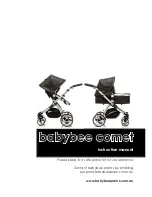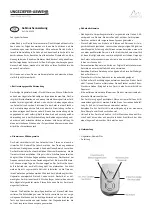
12
Instruction Book
IB019008EN October 2016 www.eaton.com
FP-25-LV-VSR
Breaker-To-Motor Starter Conversion
Figure 4.3. V201 Contactor.
Trip Free Operation
The LV-VSR is in a “trip-free” condition when the unit is in between
the TEST and CONNECT positions. Also, if the local OPEN push
button is depressed and maintained, the LV-VSR is in a “trip free”
condition.
4.2 Bushing and Disconnecting Contact Assemblies
The line and load bushing assemblies, which are the primary circuit
terminals of the LV-VSR, consist of six silver plated conductors.
Multiple finger type primary disconnecting contacts at the ends of
the conductors provide means for connecting and disconnecting the
LV-VSR to the bus terminals in the switchgear compartment.
4.3 Secondary Connection Block
The LV-VSR control circuit is connected to the switchgear control
through a multi-contact block. The movable secondary control
contacts mounted on the LV-VSR are self-aligning (See Insertion
Procedure), line-contact, slip-type connectors. The multiple finger
arrangement on the LV-VSR makes contact with a stationary
mounted element. The contact surfaces on the stationary element
are recessed to prevent accidental short circuiting of the control
circuits. These secondary disconnects mate in both the CONNECT
and TEST positions.
4.4 Interlocks
There are several interlocks built into the LV-VSR. Each of these
interlocks, though different in form, duplicate or exceed in function
that of the original breaker. These interlocks exist to safeguard
personnel and equipment. The basic premise behind the interlocking
arrangement on the LV-VSR is that the LV-VSR must not be inserted
into or removed from the live circuit while the main contacts are
closed. Also considered in the interlocking is that the LV-VSR should
pose no greater risk than necessary to the operator in or out of the
cell.
DANGER
INTERLOCKS ARE PROTECTIVE DEVICES FOR PERSONNEL AND
EQUIPMENT. DO NOT BYPASS, MODIFY, OR MAKE INOPERATIVE ANY
INTERLOCKS. DOING SO COULD CAUSE DEATH, SERIOUS PERSONAL
INJURY, AND/OR PROPERTY DAMAGE.










































